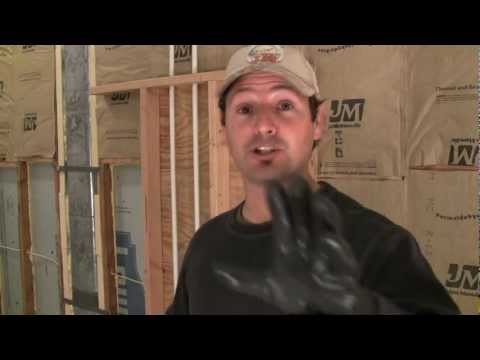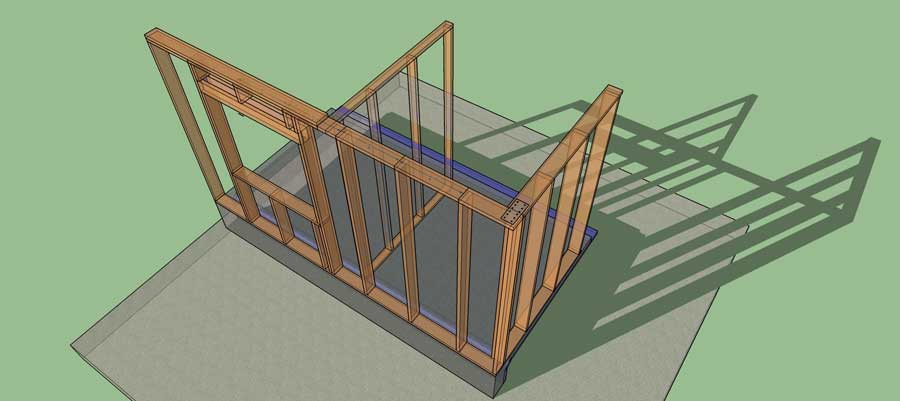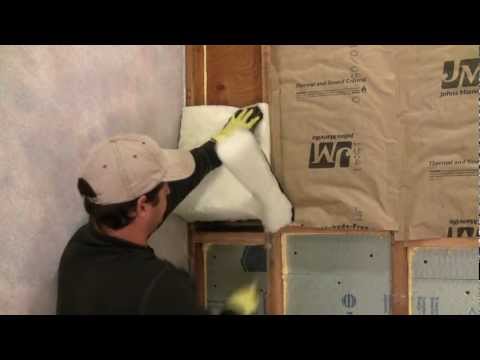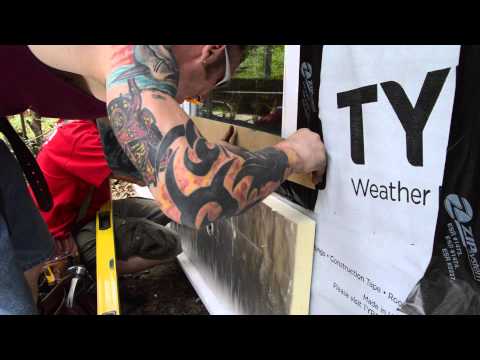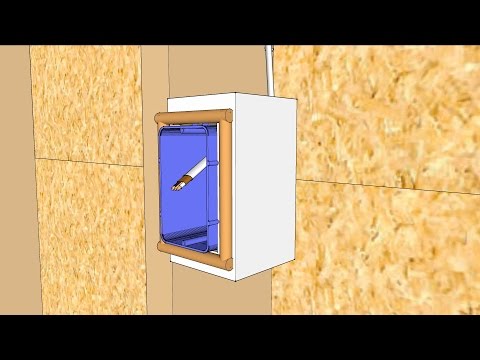Rigid foam board and canned foam give an airtight cavity that can be insulated well
The best way to keep pipes in walls from freezing is to not put them there. Aside from that, there are ways to improve the chances of avoiding that midwinter headache. Often, the reason the pipes get cold is because of air leaks in the wall cavity, often around holes cut for the pipes. Make sure the cavity is totally air tight using canned foam and/or caulk before insulating the cavity.
Two ways to insulate around water pipes (1:32)
- With a batt
- With rigid foam and a batt
Split the batt in half “ … like you’re opening a book.” Slide the back of the batt behind the pipes, completely filling the backside of the cavity. Tuck the front half of the insulation into the stud cavity in front of the pipes. Some people leave the front piece off to keep the pipes warmer, but this decreases the R-value of the wall.
(3:06) The better way to insulate a wall cavity with plumbing pipes in it is to use rigid board insulation. Rigid foam has a higher R-value than batts, so you will offset some of the loss from the pipes. Also, it is airtight.
If there is only one pipe in the cavity, you should be able to use a single piece of foam, tucked behind the pipe and slid into the cavity. If you have the two pipes (hot and cold) then Corey says fuhgeddaboudit — cut the foam vertically into two pieces using a straight edge and a utility knife.
Use foam board adhesive (3 bucks) to glue the foam in place.
Slide one piece of foam board in and then slide in the other piece. Seal the edges with canned foam and use foil tape to seal the seam running down the middle. Also, make sure to seal the holes in the plates.
Now a batt can be split to fit the remaining space in the wall cavity.
